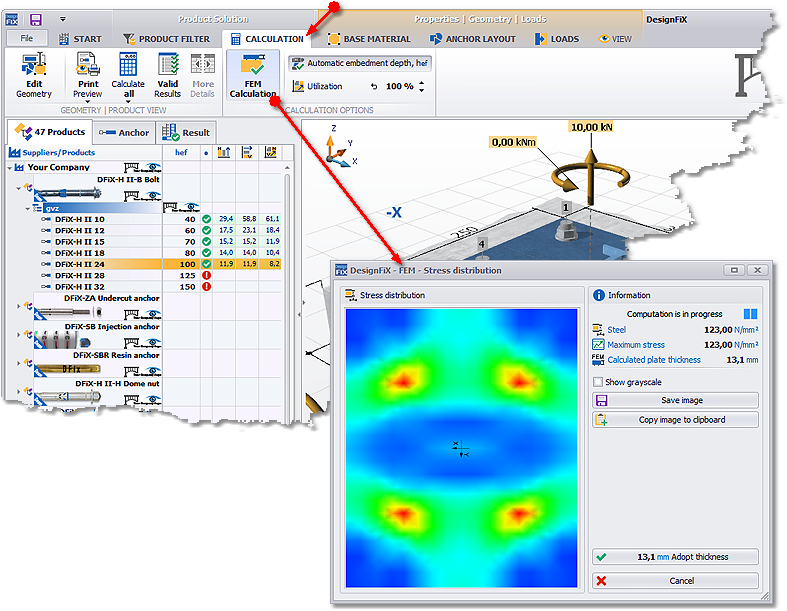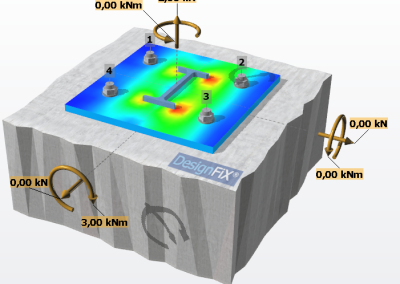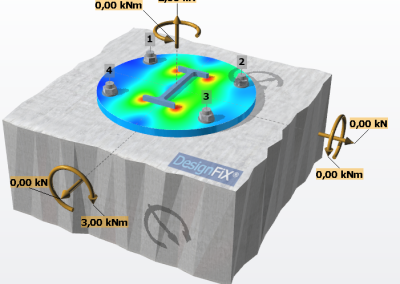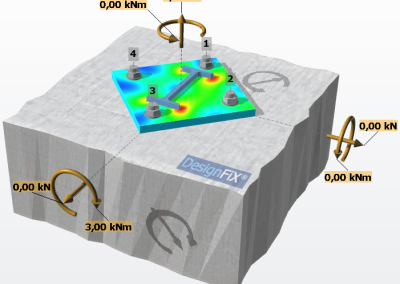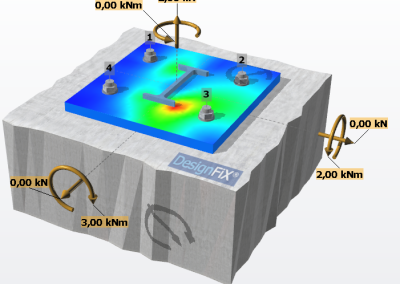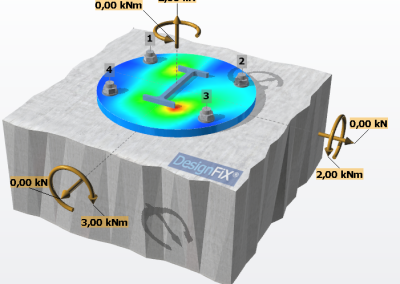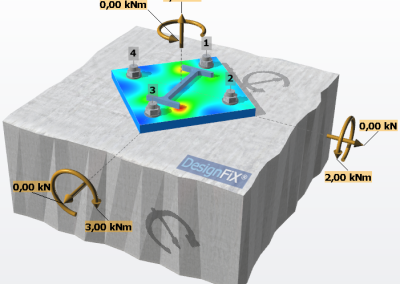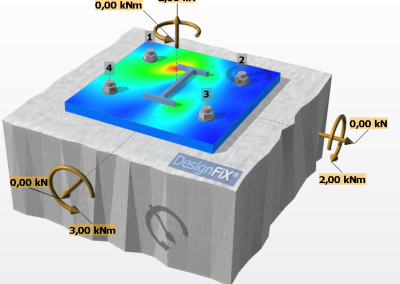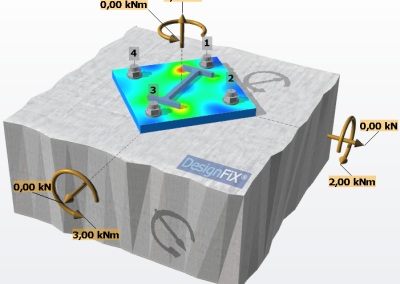Search DesignFiX Knowledge Base by Keyword
Finite Element (FEM)
DesignFiX offers a Finite Element Program (FEM) for the calculation of the base plate thickness. This program is only active if a profile is present, a valid design result is available and at least one anchor is loaded in tension. Steel type and corresponding yield strength fyk can be selected or entered user-defined on the tab ANCHOR LAYOUT. The FEM calculation is started with the function ‘FEM calculation’ on the tab CALCULATION. You may accept the result with the function ‘Adopt thickness’. Then the accepted base plate thickness is used in the ‘Printout’.
In order to minimize the computing time a linear FEM calculation is performed. A disadvantage in comparison to the more complex and time-consuming non-linear approach is that parameters such as the anchor displacement or the deformation of the base plate – even if it is small – cannot be considered.
The steel plate is supported on the welded profile and the anchor and concrete forces are applied as external loads. With stand-off fastenings no concrete compression force occurs. In this case only the anchor tension or – in case of bending moments – compression forces are applied as external loads. In the corners of the welded profile bending moment peaks occur, the size of which depends on the size of the finite elements. In the case of the base plate design these moment peaks are not decisive, as in a relative small area of the peaks a plastic deformation of the steel without big plate deformations are acceptable. For this reason a mean value of the bending moment calculated over a length of 1-times the base plate thickness plus the profile’s wall thickness is applied to determine a suitable value for the proof of the steel stresses. In the beginning, the base plate thickness is unknown. Therefore, the calculation is iterative. That means that the base plate thickness is estimated in the first step and subsequently calculated by means of the FEM program. The calculated value is compared with the estimated thickness. With significant deviation the design with the improved anchor plate thickness is repeated until the deviations are negligible.
Note
It is explicitly pointed out that the anchor plate design is based on a proof of stresses and allows no direct statement about the stiffness of the base plate. The proof of the necessary stiffness in order to fulfil the requirements of the theory of elasticity has to be done separately or it must be ensured by suitable measures (e. g., by welded stiffeners) that the conditions of the theory of elasticity are met.

